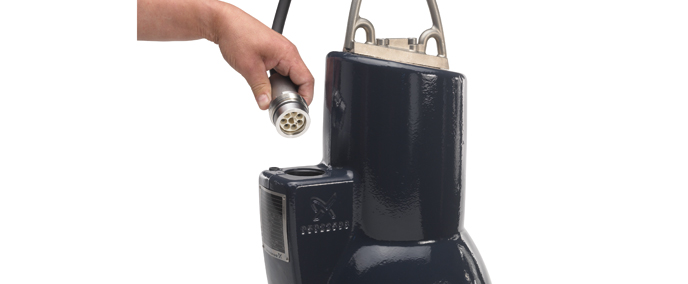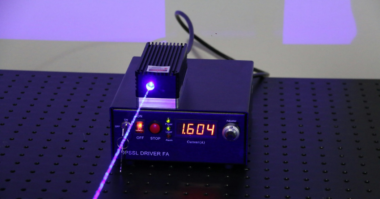With a population of 677, the small town of Harleyville, S.C., located 60 miles northwest of Charleston, was looking to upgrade its aging lift stations to increase efficiency, lower utility costs and reduce overall pump maintenance for its municipal wastewater facility.
The town employed six lift stations—five of which utilized grinder pump systems from 1985—to consolidate wastewater and pump it to a centralized wastewater processing and treatment plant.
The 25-year-old lift stations each suffered frequent clogging, expensive maintenance and repair, and skyrocketing monthly utility bills related to extended pump run times. In fact, the reliability of the entire wastewater transfer system seemed to derail every three to six months, when a pump outright failed or a station backed up because the pumps were unable to keep up with demand.
Working with global engineering consultant URS Corporation, the town began its system update by retrofitting one lift station with energy-efficient wastewater pumps from Grundfos. The improvement was dramatic and led to upgrades at two additional lifting stations. As a result, Harleyville has reduced energy use by 35 percent and cut $25,000 in annual maintenance and repair expenditures.
Efficient Pumps Slash Run Times; Energy Use
“Due to the greater pumping capacity of the Grundfos SLV pumps, the station’s run time dropped by roughly 80 percent,” said Dan Huggins, P.E., project manager, URS Corporation, who noted that peak pump operation fell from an average of 18 hours per day to 3.5 hours per day (factoring in median rainfall and infiltration amounts).
The additional pump capacity combined with the reliability of the SLV Series’ pumps made an immediate impact on the trouble-plagued system.
“Since power consumption accounts for 85 percent of a pump’s life-cycle costs, likely the most dramatic savings for this project is the ability to maximize pumping performance, across each lift station,” noted Robert Pruit, principal of Carolina Pumpworks, who worked with engineer Huggins to incorporate the SLV pumps. “Some of the town’s outdated pumps were running nearly non-stop during increased flow events to keep the wet wells from overflowing. For example, when rainfall swelled the volume of flow into the town’s sewer lines, both of the pumps at each of the individual lift stations would typically run for extended periods of time to deal with the increased flow.”
Added Capacity & Redundancy
In all, the three newly upgraded duplex lift stations each feature two 5.5 HP, 1,750 RPM three-phase pumps that alternate operation according to the station’s level control system, which offers both system redundancy and added capacity during increased flow events. To overcome prior difficulties with pumps clogging, the team selected the optional SuperVortex impeller, to help ensure that solids up to 3-inches in diameter pass freely through the solids-handling pump without jamming.
Carolina Pumpworks also provided custom-designed control panels to meet Harleyville’s requirements. The control panels included the Grundfos IO113 pump monitor relays, that together with the pump sensors, provides more protection against thermal overload and seal leakage.
The transformation began in October 2011 when—with the aid of state grants— the town installed its first SLV pump system at Pump Station 5 as a retrofit application.
This aging lift station served 125 residents and pumps sewage one-quarter mile to the next manhole and was plagued with service issues.
“The old pumps frequently clogged and the resulting motor stress forced a pump removal—and repair— roughly every six months,” recalls Harleyville Maintenance Superintendent Tommy Weeks. “Pump maintenance for this station alone was running nearly $4,000 a year.”
Designed to handle raw unscreened sewage, effluent and process water in municipal applications, the SLV series pump with its recessed super vortex impeller was an ideal solution for the initial lift station retrofit. The upgraded Lift Station 5 has been operating maintenance-free from its initial start-up in 2011 without a single incident of clogging.
“These new pumps have really helped mitigate any maintenance costs that we have had in the past due to pump ‘burn-out’ and clogging,” explained Weeks. “In addition, these pumps help reduce build-up in the gravity lines because they pump more volume more quickly. After more than three years and 2,000 hours run time under Station 5’s belt, the pumps have proven themselves to be ‘solid performers’ and the ideal solution for our wastewater system.”
In fact, the pump’s performance was so dramatic that URS project engineer Dan Huggins knew that when the time came to rebuild Lift Station 4—the weakest link in the town’s wastewater system—they would tailor the station around the Grundfos SLV pumps.
State Funding Leads to Additional Pump Upgrades
Due to the success of Lift Station 5, when more state funding became available in 2013, Harleyville upgraded two additional lift stations with the SLV submersible pumps. Both projects were up and running by December 2013.
The original 4-foot wet well at Lift Station 4 was too small for the raw sewage intake and required a complete overhaul. The pumps in Station 4, which serves 250 people, were running nearly continuously in an attempt to keep up with the sewage flow. As a result, the station lost a pump to repairs roughly every three months, resulting in an annual maintenance cost of $15,000.
Following completion of the Lift Station 4, a local hotel and an apartment complex were constructed nearby. The high performing lifting station has not faltered in managing the increased sewage flow from these facilities.
Speaking on the importance of receiving grant money for the new Lift Station 4, Mayor Charles Ackerman said, “This grant money will let us build a whole new lift station and reroute the force main to a different manhole, which will save us time and energy. We desperately need this; we’ve had a lot of problems with that station. It has a lot of water coming into it, a lot of sewage. This will be a tremendous help to the town.”
Following the reconstruction of Lift Station 4, the town upgraded an additional lift station with two similar Grundfos SLV series pumps. Like the other aging lift stations in the Harleyville system, the outdated pumps in Lift Station 2 required service every six to seven months.
Tommy Weeks, the town’s maintenance superintendent, estimates that the new pumps at Lift Station 2 will eliminate approximately $4,000 in annual maintenance costs.
Putting Repairman Out of Business
The goal moving forward for Harleyville will be to upgrade the remaining lift stations with the SLV pumps, when more state funding becomes available.
“We’ve come a long way to ensuring the integrity and operational efficiencies of our wastewater system,” concludes Weeks. “There are zero maintenance costs or issues with the new pumps. I chuckle each time the repairman—accustomed to a significant amount of business from us—calls to ask when we think one of the pumps will be in for repair.”







Comments